Waste Reduction Week is coming upon us again (October 19-25) and we here at Green Action Centre are your resource for how to reduce the amount of waste that you produce while inhabiting this planet. Not only does consumption take up a lot of resources and contribute to climate change, but the waste associated with consumption has detrimental effects on the environment as well. For example, Winnipeg’s landfill is the second largest greenhouse gas emitter in Manitoba.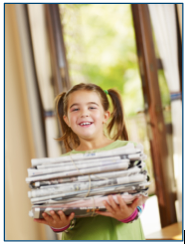
Waste Reduction Week is about making smaller, more conscious choices, in our daily lives to reduce the amount of waste we generate. Manufacturers often package their products in more packaging than they need. Many products, especially technological products, are designed to be obsolete in a short amount of time. Landfills are growing and finding more places to put our waste is becoming increasingly difficult. No one wants a landfill in their backyard, and unfortunately not a large scale composting facility either. And the basic fact is that Earth simply cannot sustain our consumption habits. So what can we do?
The first steps to reduce waste are to simply buy less stuff and recycle and reuse what you can. This past August 13th was Earth Overshoot Day, the day when our resource demands surpassed what the Earth can provide in a year. This day arrives a few days earlier each year. In 1993, it was October 21. In 2003, it was September 22.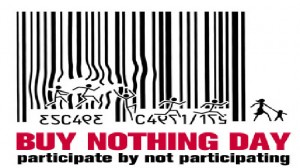
There is also, Buy Nothing Day, falling on November 27 this year. Deemed the busiest shopping day of the year (the day after Thanksgiving in the U.S. AKA Black Friday-the day of the year that merchants enter the black/start making profit) Buy Nothing Day is a protest against consumerism.
Rethink your purchase. Wait to purchase it. Take the time to think about why you want something and how it will be useful. If you make the effort to go back the next day or week to buy the item, that item is more likely to be a useful purchase rather than an impulse purchase that doesn’t serve you well and will end up in the landfill in a short amount of time.
Other ways to rethink your purchase:
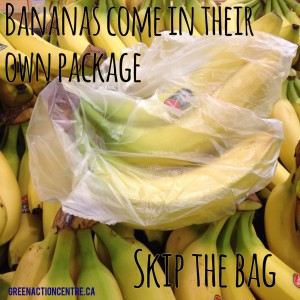 Do you really need a produce bag for those bananas (or most other produce)? They come in their own package! Try a reusable produce bag for other produce like grapes. Keep them with your reusable grocery bags and you’re set to go!
Do you really need a produce bag for those bananas (or most other produce)? They come in their own package! Try a reusable produce bag for other produce like grapes. Keep them with your reusable grocery bags and you’re set to go!- Compost your kitchen scraps or better yet, make vegetable broth with the peels and ends you wouldn’t normally eat!
- Buy in bulk, but beware of excess packaging here too, retailers like Costco often just package multiple regular sized items (with their usual packaging) in more packaging. Single serve items like coffee pods are notorious waste producers.
- Look for products with less packaging (like bags of coffee instead of single serve coffee pods), and after purchasing, open the item and give the excess packaging back to the retailer. This will send a message to retailers and producers to cut down on excess packaging.
- Shop for second hand items at local thrift stores or online, you’ll get a deal and little to no packaging! Attend our 2nd Chance Market October 24 to find something new-to-you or if you’re looking to donate some of your gently used items, drop them off during the times allotted.
- Ask yourself if an item can be fixed or mended. It is often true that items aren’t made to last like they previously were, and that it is often cheaper for you to just buy a new item, but our throw away culture is unsustainable. If you can’t afford to fix or mend some items, maybe the purchase should be rethought. Watch the Story of Stuff for some great information.
- Finally, ask yourself if the item belongs in the trash. Many items can be recycled using different facilities other than Winnipeg’s municipal recycling. Visit Recycle Manitoba’s website to find out where in Manitoba to recycle things like TVs, light blubs and chemicals. TerraCycle accepts a lot of product packaging like chocolate bar wrappers, coffee bags, Nespresso and Tassimo discs, cigarette butts and packaging. And you can even use it to fundraise for your school or organization!
Often, we aren’t even aware when we are creating waste. There is a lot of waste we don’t see which is generated in the manufacturing of items, and a lot of waste is created when an item is used. 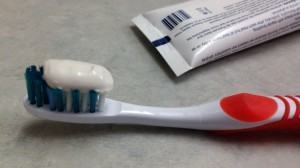 Take exfoliating face wash and toothpaste; were you aware that there are tiny micro beads that are designed to be washed down the drain, which then accumulate in our lakes and oceans? Look for products without polyethylene or polypropylene, and look for natural exfoliates like apricots, nut shells and sand. Or make your own toothpaste:
Take exfoliating face wash and toothpaste; were you aware that there are tiny micro beads that are designed to be washed down the drain, which then accumulate in our lakes and oceans? Look for products without polyethylene or polypropylene, and look for natural exfoliates like apricots, nut shells and sand. Or make your own toothpaste:
Mint Toothpaste
2 T baking soda
1 T vegetable glycerin (available at Vita Health)
1/2 tsp sea salt
20 drops peppermint essential oil
Mix all ingredients into a paste and store in an airtight container.
It all comes back to the four ‘R’s: Rethink, Reduce, Reuse, and Recycle. For more tips and resources, visit our Waste Reduction Week page.

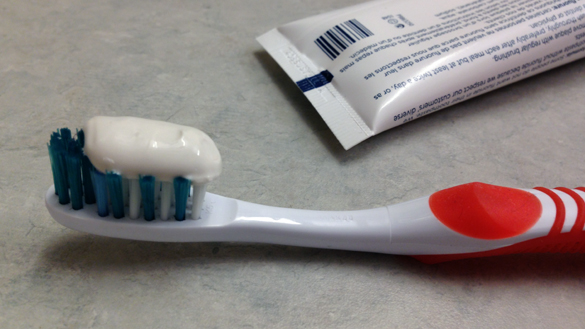


Thanks for the mention! And just to answer your question, we do indeed recycle the entire Nespresso coffee capsule; the leftover coffee is composted and the aluminum is smelted. We also sell Zero Waste Boxes that accept any/all types of coffee capsules (including K-cups) for recycling, which you can get at Grand & Toy and Staples. Happy Waste Reduction Week!
My Grade 3 class has been talking about what we can do for our environment, composting ,reducing and recycling. We would like to start a “worm” compost in our classroom for the food scraps from their lunches. Any information about how to set this up and where to get supplies would be most helpful. Marlene Schroeder The King’s School
That’s great Marlene! We’ll contact you with some information soon!